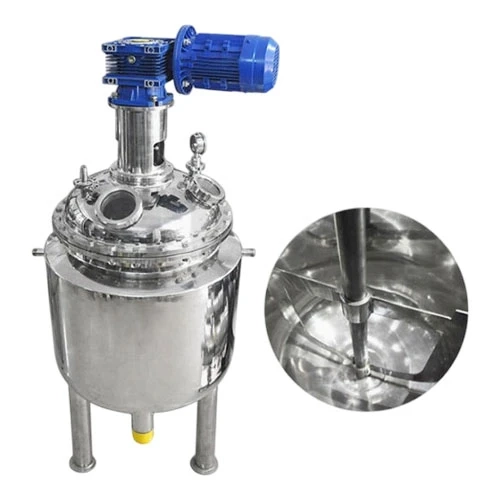Stainless steel mixing equipment is essential in various industries, including pharmaceuticals, food processing, chemicals, cosmetics, and more. The durability, corrosion resistance, and hygiene standards of stainless steel make it the preferred choice for mixing solutions. In this article, we will explore the benefits, applications, and types of stainless steel mixing equipment.
What is Stainless Steel Mixing?
Stainless steel mixing refers to the use of stainless steel vessels, tanks, and machinery for blending, homogenizing, or processing different materials. This process is crucial in ensuring consistent product quality, stability, and efficiency in production lines.
Key Benefits of Stainless Steel Mixing Equipment
1. Corrosion Resistance
Stainless steel is known for its exceptional resistance to rust, oxidation, and chemical reactions, making it ideal for mixing applications involving acidic or corrosive substances.
2. Hygiene and Cleanliness
Industries such as pharmaceuticals and food processing require strict hygiene standards. Stainless steel mixing tanks and vessels are easy to clean, preventing contamination and ensuring compliance with FDA and cGMP regulations.
3. Durability and Strength
Stainless steel has a high tensile strength, allowing it to withstand high-pressure mixing operations and mechanical stress without compromising performance.
4. Temperature Resistance
Stainless steel can endure extreme temperatures, making it suitable for applications requiring heating or cooling during the mixing process.
5. Versatility
Stainless steel mixing tanks come in various sizes and designs, offering solutions for different industrial needs, including batch mixing, continuous mixing, and high-shear mixing.
Common Applications of Stainless Steel Mixing
1. Pharmaceutical Industry
· Formulation of liquid medicines, syrups, and suspensions
· Blending of powders for tablets and capsules
· Sterile mixing of injectable solutions
2. Food and Beverage Industry
· Mixing of dairy products, sauces, and beverages
· Blending of food ingredients, emulsions, and pastes
· Fermentation processes in brewing and dairy industries
3. Chemical Industry
· Production of adhesives, coatings, and sealants
· Mixing of polymers, resins, and solvents
· Blending of detergents and cleaning agents
4. Cosmetic Industry
· Homogenization of creams, lotions, and gels
· Mixing of perfumes and essential oils
· Emulsification of shampoos and conditioners
Types of Stainless Steel Mixing Equipment
1. Stainless Steel Mixing Tanks: Designed for bulk mixing of liquids and powders, these tanks are available in various capacities and can be fitted with agitators, baffles, and heating/cooling systems.
2. Ribbon Blenders: Used for dry powder mixing, ribbon blenders have a helical blade system that ensures uniform blending of ingredients.
3. High-Shear Mixers: These mixers are ideal for emulsification and homogenization, commonly used in the pharmaceutical and cosmetic industries.
4. Colloidal Mills: Used for fine particle size reduction, colloidal mills help in achieving smooth and uniform mixtures in food, pharmaceuticals, and chemical products.
5. Vacuum Mixing Vessels: These are used for mixing under vacuum conditions, preventing air entrapment and ensuring high-purity production in pharmaceutical and cosmetic applications.
Choosing the Right Stainless Steel Mixing Equipment
When selecting stainless steel mixing equipment, consider the following factors:
· Material Grade: SS 304 or SS 316L for better corrosion resistance and hygiene
· Capacity Requirements: Determine the batch size and production volume
· Mixing Speed and Efficiency: Choose based on product viscosity and required blending time
· Additional Features: Options like heating, cooling, and vacuum capabilities enhance the process efficiency
Mixing Tank is an equipment is a fundamental component in multiple industries due to its durability, hygiene, and efficiency. Whether used in pharmaceuticals, food processing, chemicals, or cosmetics, these mixing solutions help achieve consistency, quality, and regulatory compliance.
For businesses looking to invest in high-quality stainless steel mixing equipment, selecting the right design and features is crucial for optimizing production processes and maintaining industry standards.



